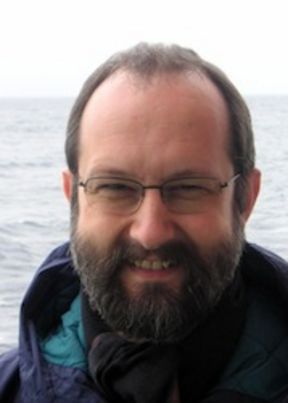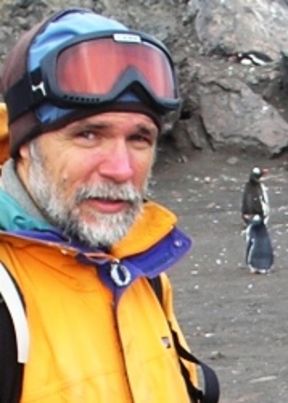WP 5 - Sediment Archives and Glacial Geomorphology
Objectives
Work package 5 “Sediment archives and glacial geomorphology” deals with sediment archives from King George Island (KGI) on the sea floor, on land and in lakes. Signals of past environmental changes stored in these archives will be combined with investigation of glacial geomorphology on KGI.
Retreats and advances of the KGI icecap occurred several times during the last millennia of the Holocene. So the recent ice retreat and its consequences for the environment had its precursors during the Medieval Climate Optimum or after the Little Ice Age.
Objective of this WP is to reconstruct the KGI icecap variations during the last millennia of the Holocene from the sediment archives. Regional sea level variations would have been a major factor for past KGI icecap variations. Due to tectonic and isostatic vertical land movements some of the sediment archives that recorded past icecap variations are accessible on land in addition to the marine archives. To do this we would like to analyse and map the sediment composition in the KGI area. This will provide proxies for past environmental changes
We aim to discriminate the regional part of sea level variations at KGI from the Holocene global and together with reconstructed icecap variations we will add those parts to the KGI icecap models. With these data the models should be able to reconstruct past KGI icecap variations that can be validated using sediment archives (IMCOAST). KGI icecap models that can reconstruct the past are reliable enough to predict future icecap variations. Predictions for future environmental change at KGI will be based on signals such as proximity to the ice edge, melt water input, biological productivity during the past as recorded in geo-archives.
About the WP Leader Gerhard Kuhn and Co-Leader Jorge Adrián Strelin
WP 5 is led by Dr. Gerhard Kuhn of the Alfred Wegener Institute Helmholtz Centre for Polar and Marine Research in Germany.
Gerhard Kuhn, marine geologist with specialization on geochemical sedimentology, physical properties, palaeoceanography and proximal ice sheet processes. Degrees from Göttingen University, Diploma in Geology and Palaeontology (1979) and Doctoral Degree in Geology-Palaeontology about "Bermuda North Lagoon sedimentological development during the Holocene sea level rise" (1984), including nine month research stay at the Bermuda Biological Station. Postdoctoral studies about "The Bahamas Carbonate Platform" within the Ocean Drilling Program (ODP, Leg 101) at Göttingen University. Since 1985 employed at the Alfred Wegener Institute, Helmholtz Centre for Polar and Marine Research in Bremerhaven, recently as Senior Research Scientist and head of the sedimentary petrology laboratories. Focused on Southern Ocean processes, Antarctic Ice Sheet variability and stability and ice proximal glacial and glaciomarine sedimentation processes in the past. He participated in ODP Leg 177 to the Southern Atlantic, two Antarctic geological Drilling campaigns (ANDRILL, national representative) and 26 expeditions with RV "Polarstern", two as Chief Scientist. He has more than 100 peer reviewed publications and is reviewer of journal manuscripts and research proposals.
Jorge Adrián Strelin is Co-Leader of WP5 and obtained his degree in Geology in 1985 at the Facultad de Ciencias Físicas y Naturales, Universidad de Buenos Aires (FCEFN, UBA, Buenos Aires). Since then he has been working as staff researcher in Instituto Antártico Argentino (IAA), with different work places in research centers and universities from 1985 to 2005 (CIRGEO, FCEFN, UNC, CADIC), and since 2005 in the Centro de Investigaciones en Ciencias de la Tierra (CICTERRA, CONICET, UNC, Córdoba). His scientific research comprises Glacial Geology and Periglacial Geomorphology of Southern Patagonia, Tierra del Fuego, Scotia Arc and Antarctic Peninsula. To carry out his studies in Antarctica he was supported by the Agencia Nacional de Promoción Científica y Tecnológica - Dirección Nacional del Antárticos (ANPCyT - DNA, Argentina) in collaboration with the National Science Foundation (NSF, USA) and the Institute of Low Temperature Science of Sapporo University (ILTS, Japan); for his works in Tierra del Fuego, the funds were provided by the Concejo Nacional de Investigación Científica y Tecnológica (CONICET, Argentina) and Centro de Estudios del Cuaternario (CEQUA, Chile); and for his studies in South Patagonia, by the National Oceanic and Atmospheric Administration (NOAA, USA), Comer Science and Education Foundation (CSEF, USA), NSF (USA), as well by DNA. Since 1987 he has published around 30 peer-reviewed papers, 26 book and proceeding chapters, and 60 expanded abstracts and abstracts.
His academic career started in 1982 as assistant in the course of Geomorphology in the Departmento de Geología of FCEFN, UBA; followed by Professorship in Physical Geography of the Universidad Nacional de la Patagonia San Juan Bosco (1997 to 2002), and as a collaborator of the Cátedra de Hidrología General of the Escuela de Geología, FCEFN, UNC (since 2005). The academic work comprises also the direction of seven degree works (UBA and UNC), one Master of Science (University of Regina, Canadá), and two Doctoral Thesis (UNC).
Since 2012 he has collaboration within the international IMCOAST and since 2013 in the IMCONet projects.

Gerhard Kuhn, marine geologist at the Alfred Wegener Institute, Helmholtz Centre for Polar and Marine Research in Bremerhaven, Germany.

Jorge Adrián Strelin, glacial geologist and periglacial geomorphologist of the Instituto Antártico Argentino in Córdoba, Argentina.
